From bumps to Brick Search: how identifying LEGO Collectible Minifigures has evolved
From the days of checking bump codes to simply scanning for individual characters on the Brick Search app, here’s how identifying LEGO Collectible Minifigures has evolved across nearly a decade and a half.
The very first LEGO Collectible Minifigures debuted all the way back in 2010, placing the focus squarely on the LEGO Group’s tiny plastic people for the first time. Minifigure-driven sets were nothing new by that point, but the company had never before anchored an entire theme solely around its characters – and the increased budget poured into them as a result paved the way for some of the most detailed and desirable minifigures to date.
Click here to learn more or if you’re experiencing issues using the Brick Search Series 25 minifigure scanner.
Those early series contained memorable classics like the zombie, clown, mariachi guy, pharaoh, elf warrior and so many more, the majority of which now fetch a pretty penny on the aftermarket. But they were arguably difficult to find even at the time – at least more so than any other LEGO sets – because they were some of the first LEGO products to arrive in blind packaging.
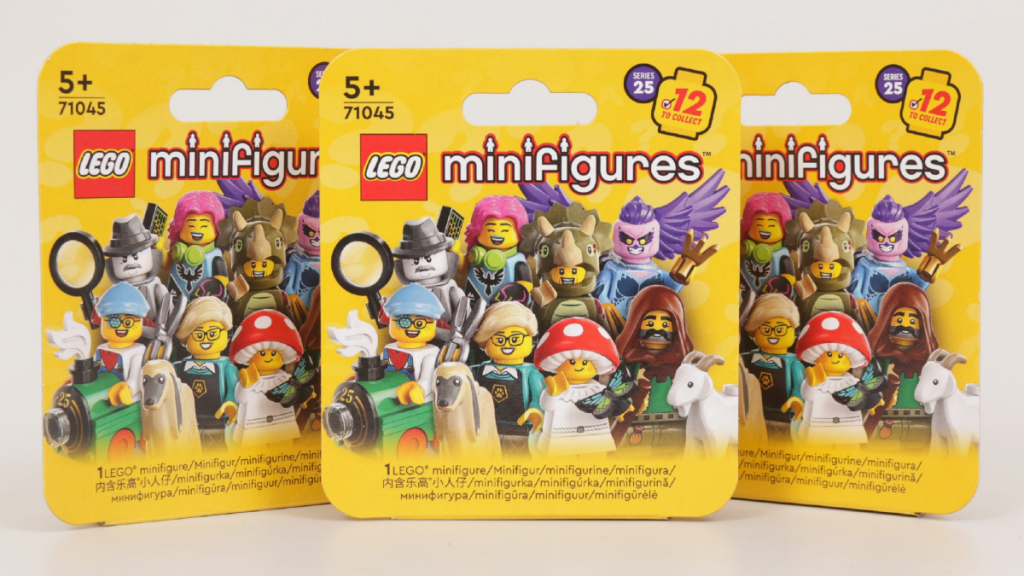
Blind foil bags have now become blind boxes, but the purpose behind the packaging remains the same: to mask the minifigure inside and give consumers a surprise with each and every purchase. If that happens to drive up sales as fans buy more and more minifigures in search of their faves, well, that’s just good business. But savvy collectors have thankfully found a few ways to identify the contents of those packets over the years.
The latest of those is (spoilers!) using Brick Search to scan 71045 Series 25 boxes with larger data matrix codes, instantly bringing up the minifigure inside, but we’ve been finding ways to cheat the system since 2010. Here’s the full timeline of Collectible Minifigures identification methods…
Unique barcodes

If you knew what you were looking for, picking out your favourites from the 16 characters in Series 1 and Series 2 was actually pretty easy. Clearly underestimating the fan community’s dedicated to sidestepping blind packaging, the LEGO Group printed unique barcodes on each foil bag that could instantly identify the character inside, with no scanning required.
Telling each of the barcodes apart wasn’t exactly trivial – you had to be really good at distinguishing line thicknesses – and it still required fans willing to test and collate the data in the first place, which then varied region by region. But until the advent of 71045 Series 25, this was still arguably the easiest method the LEGO Group had ever given us for identifying Collectible Minifigures… even if unintentionally.
Bump codes

Hot on the heels of the first series’ launch (and even ahead of the second series’ launch) in 2010, the LEGO Group announced that not only was a third series in the works – the response to the first having come as a surprise – but that it would be the first to arrive without unique barcodes. Bad news for anyone hoping to amass an army of elves from the new batch of characters, then – until the series arrived proper, and an FBTB forum member stumbled on the LEGO Group’s new tell.
The foil bags now featured ‘bump codes’: small notches on the outside of the packaging, arranged in a way that – just like the barcodes before them – could identify the character inside. Decoding these dots became an international pastime for LEGO fans at the launch of every new series, with guides shared around online for others to use. And for a while, it seemed like a pretty reliable way to determine individual minifigures.
Feeling bags

The good times couldn’t last forever, though, and – just as it had with the barcodes – the LEGO Group soon got wise to the situation. By the time Series 6 rolled around, the bumps had become less and less reliable, to the point that many fans were giving up on them entirely in favour of just feeling out their favourite characters. The foil bags were easily manipulated, so with the right knowledge of individual pieces, you could usually tell what was inside.
This was a less reliable method for distinguishing minifigures with very similar parts – a 3L bar could easily be mistaken for any other bar-like piece, for example – and so was initially used in conjunction with the dot codes. But when the bumps disappeared altogether, this was all we were left with. It was easily the most time-consuming method of them all here, but we’d soon come to miss it when it was gone.
Weighing individual boxes
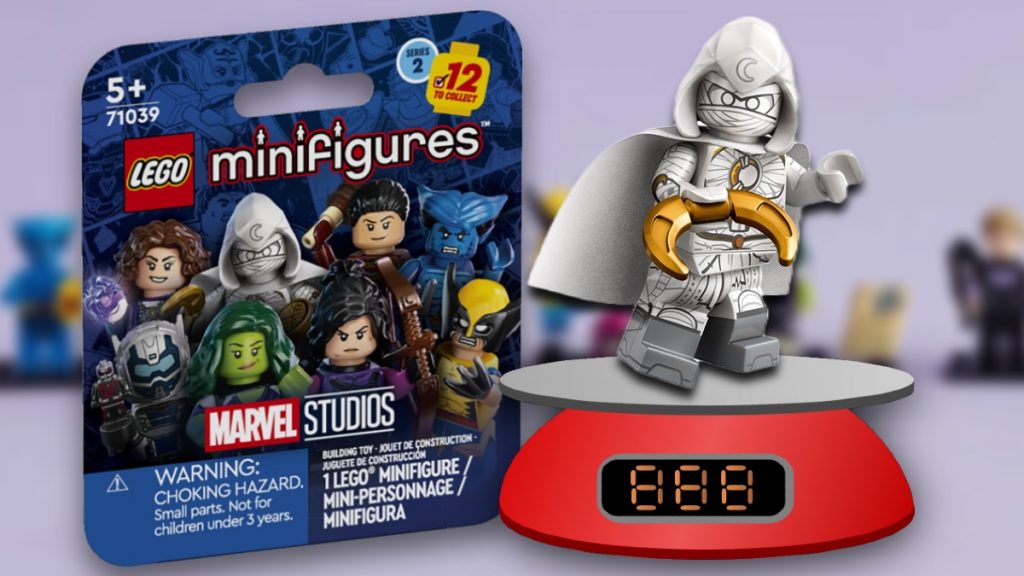
The LEGO Group had long promised to do away with foil bags in its pursuit of environmentally-friendly packaging, and the results of its extensive tests materialised in September 2023 with 71039 Marvel Series 2. 71038 Disney 100 had been the last series to arrive in traditional bags, and now we were faced with completely unreadable cardboard boxes.
The first batch of boxes had no unique barcodes or data matrices, and so the only solutions that presented themselves for acquiring a complete collection of Marvel characters were as follows: ordering an entire box from a third-party retailer (simple, but the very definition of overbuying); picking up individual minifigures from the secondary market (easy, but expensive); buying at random (unreliable at best); tearing open boxes in stores (not advised); and weighing individual boxes.
That last one was the final, desperate attempt of a community grasping in the dark for a way to not end up with 15 Goliath minifigures (and who could blame them?), but it was never quite as reliable as you’d have hoped. Tiny differences in weights between boxes and characters blurred the lines between more than a few minifigures, and that’s before you get to the hassle of bringing a precise set of scales to the LEGO Store.
Scanning boxes using Brick Search
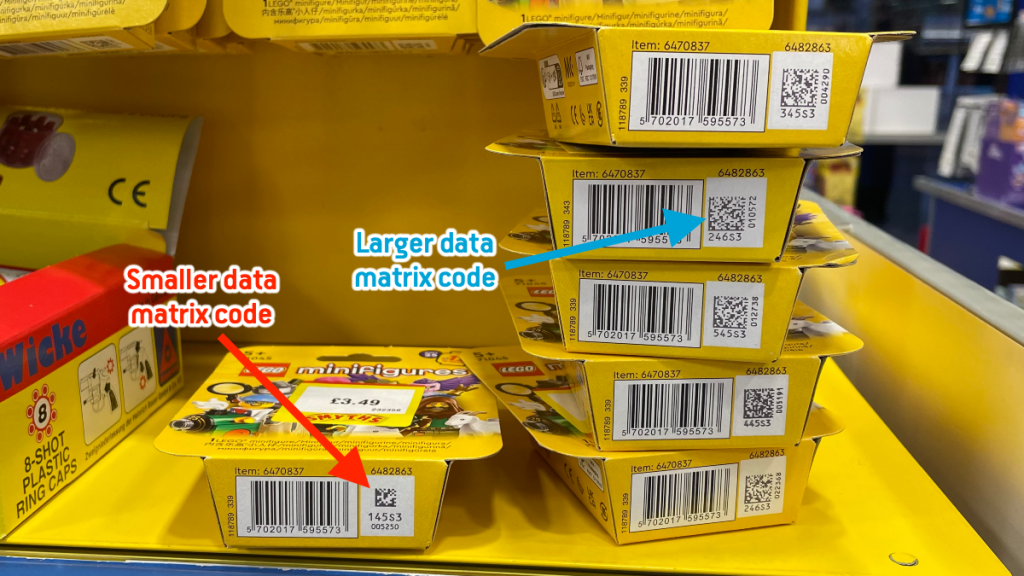
The good news is that the LEGO Group has now seemingly come full circle with 71045 Series 25. The new yellow boxes all feature the same barcode, but next to them on the bottom of the packet is a data matrix code that can identify its contents. As long as you’ve got a box with the larger code (see the image above for reference), all you need to do is download and install the Brick Search app, and then point the barcode scanner at the data matrix code (while covering up the barcode).
Hey presto: you can now instantly tell what’s inside each box. This is essentially the quickest and easiest way yet to identify Collectible Minifigures. You don’t need an encyclopaedic knowledge of barcodes, a firm handle on the differences in dot codes or the ability to feel your way around a foil bag. All you need is the right batch of minifigures and the Brick Search app (which is free to download on Android here and iOS here).
Whether this new method is a sly gimme from the LEGO Group or yet another unintentional slip-up remains to be seen, but fingers crossed it stays in place for at least another few series: how else are we going to reliably amass an army of Vampire Knights or Goatherds?
Support the work that Brick Fanatics does by purchasing your LEGO using our affiliate links. Thanks!
Author Profile
- I like to think of myself as a journalist first, LEGO fan second, but we all know that’s not really the case. Journalism does run through my veins, though, like some kind of weird literary blood – the sort that will no doubt one day lead to a stress-induced heart malfunction. It’s like smoking, only worse. Thankfully, I get to write about LEGO until then.
Latest entries
August 2024 sets02/07/2024LEGO DREAMZzz 30660 Zoey’s Dream Jet Pack Booster revealed
Latest02/07/2024LEGO Star Wars, Gamer and Animal gift sets confirmed
August 2024 sets02/07/2024First look at LEGO Technic 42184 Koenigsegg Jesko Absolut White Hypercar
News01/07/2024New LEGO Insiders rewards available now – Micro NINJAGO City sets, F1 polybag and more

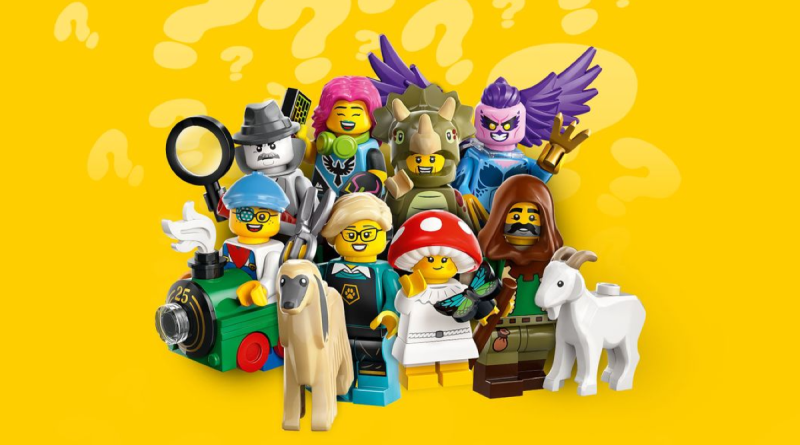
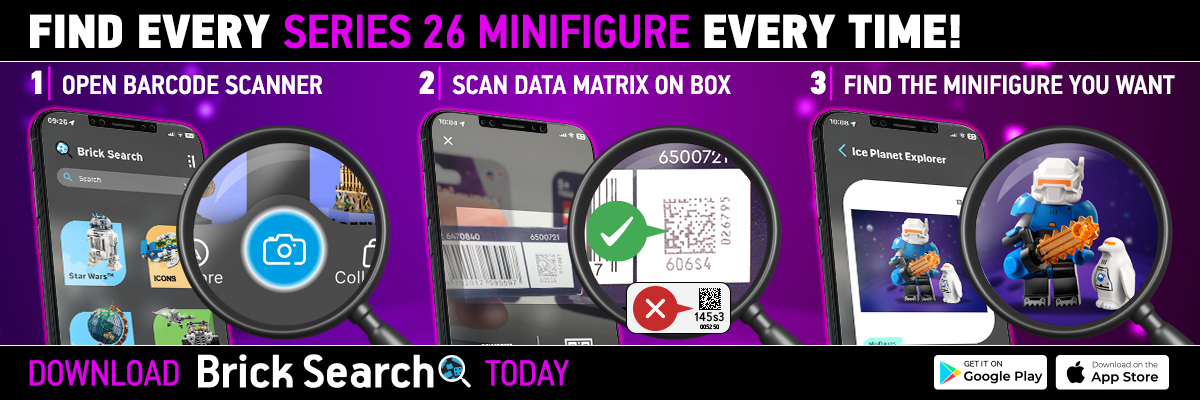




I’m in the UK and successfully used the app to scan the smaller matrix codes with 100% accuracy. Maybe they’ve updated the app since this article was published? Anyhow, it did work for me! Finally got my hands on a vampire Knight :DDD
Hi, I was trying this on Sunday in a local supermarket but I think boxes had small bar code so didn’t work. Scanning just threw up the same info each time. Is there any way to find the larger codes or do something with the small ones?
Hi Richard – the smaller codes don’t contain enough information to identify the minifigures unfortunately, so nothing can be done with those. It looks like later batches include the larger codes, so keep an eye out over the next few weeks – hopefully you’ll find some!
Hi Richard,
I was in Sainsburys yesterday (Monday) and managed to scan the smaller codes. You have to hold it quite close to the camera for it to scan. It popped up with a picture of the minifigure inside. I was still a little nervous that it was feeding me wrong information, but when I got them home and opened them, the app had been 100% accurate with the four I’d picked out. I’d say try it again! It worked for me 🙂